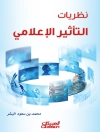Cue & Cut is a ‘practical approach to working in television studios’ for anyone who might want to work in that medium. It’s full of useful information about kit, and how you would use it to create multi-camera content. Written by a multi-camera producer-director with years of drama and teaching experience, it presents both a way of handling studios and a source of information about how things have changed from the days of monochrome to HD tapeless modes – with some thoughts on 3D HDTV
The book is firmly based in first-hand teaching experience and experience of producing, direction, floor managing (and so on) and on working with top flight Actors, Writers, Musicians, Designers of all disciplines and Sound and Camera crews, both at the BBC and in ITV.
The book will certainly cover multi-camera aspects of Undergraduate, HND and B.Tech courses and should be useful to those on short courses, whether practical or post-graduate.
Innehållsförteckning
LIST OF ILLUSTRATIONS
CONTRIBUTORS
PREFACE
ACKNOWLEDGMENTS
INTRODUCTION
PART I: SAFETY & GOOD PRACTICE
PART II: INTRODUCTION TO THE STUDIO
1 – BASICS
2 – WORKING WITH CAMERAS
3 – LENSES AND SHOOTING CONVENTIONS
4 – THE STUDIO PRODUCTION TEAM
5 – TECHNICAL JOBS IN THE STUDIO
6 – DESIGN AND SETS
7 – THE JOB OF SCRIPT SUPERVISOR AND MULTI-CAMERA PAPERWORK
8 – CAMERA SCRIPTS, CAMERA CARDS ETC. AND CREATING THEM IN MS WORD (with a note on Autocue)
9 – IN THE STUDIO – COMMUNICATION
10 – LIGHTING FOR VIDEO CAMERAS – AN INTRODUCTION
11 – MICROPHONES & SOUND
PART III: CONTENT
12 – INTERVIEWS, DISCUSSION AND CHAT
13 – DEMONSTRATIONS AND MOVEMENT
14 – HAVING IDEAS
PART IV: APPLYING THE PRINCIPLES
INTRODUCTION
15 – GETTING IT ALL TOGETHER
16 – DRAMA
17 – MUSIC
18 – SHOOTING ACTION
AFTERWORD
APPENDIX I: ASPECT RATIOS
HISTORY
OTHER FORMATS
SUMMARY
APPENDIX II: CONTINUITY – A SUMMARY
VIDEOGRAPHY
BIBLIOGRAPHY AND REFERENCES
SUGGESTED FURTHER READING
INDEX
Om författaren
Roger Singleton-Turner is a prize-winning experienced freelance producer-Director of single and multi-camera television programmes. He has taught television production techniques at the BBC and in a number of educational establishments in the UK (and Thailand) and completed this book whilst an Academic Tutor and Module Leader at the University of Sunderland












